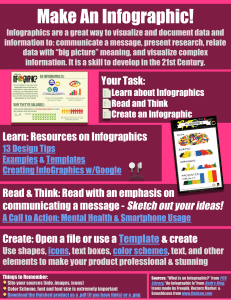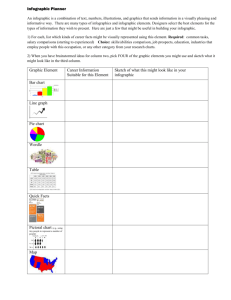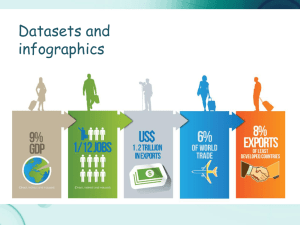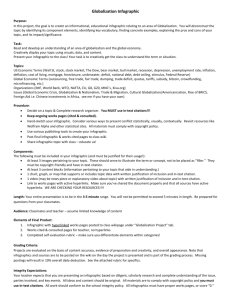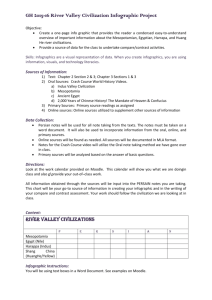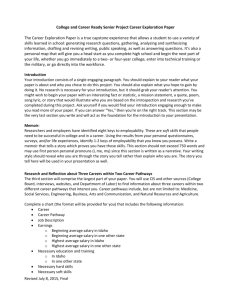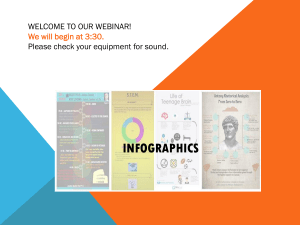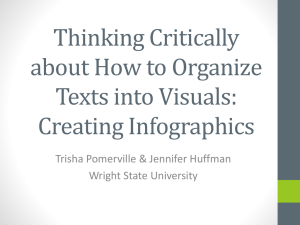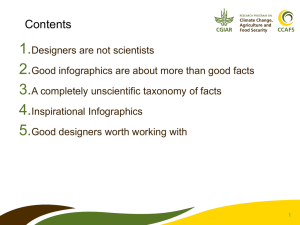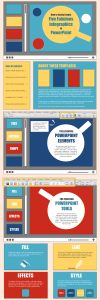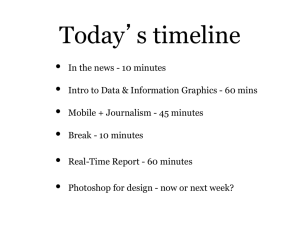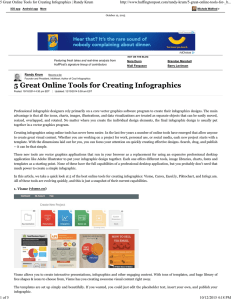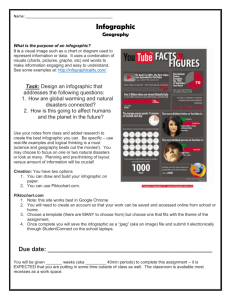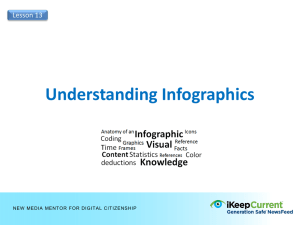Presentation - LOEX Annual Conference
advertisement
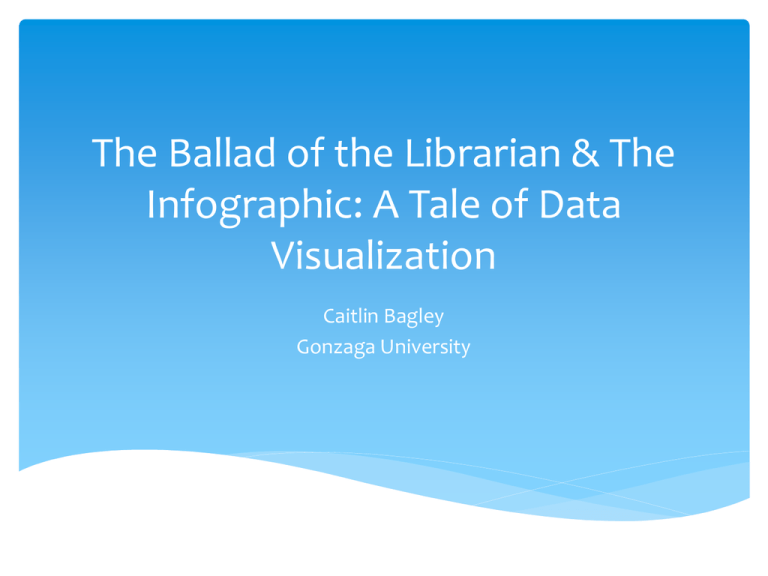
The Ballad of the Librarian & The Infographic: A Tale of Data Visualization Caitlin Bagley Gonzaga University What is an Infographic? Graphic visual representations of information, data or knowledge. Doug Newsom and Jim Haynes (2004). Public Relations Writing: Form and Style. p.236 Posters Maps Signs Graphs Examples Why visualize data? The Value of Data Visualization Examples Information is Beautiful Infographic of the Day Visual.ly Infogr.am Teaching students about data Ask students about what types of datasets they think there are. The board will quickly fill up. Narrow it down, and ask them what types of datasets they think there are about THEM! Discussing Bias in Infographcis and News Sources Compare and contrast news sources. Take a current event that is addressed by biased news sources. Have students discuss how these things differ. Point the facts that BOTH articles agree on. But how can I create one? Infographics are easy! You just need a little creativity. Pick a data set, preferably one with a lot of information that can be compared to one another. Think about what you want to show. This is the perfect time for brainstorming! Brainstorm Use Post-Its! Form small groups! Use markers! What colors will stand out the most? How much information should you depict? Who is your audience? What’s most important to depict? What data should I use? Facebook, Tumblr, Twitter What information do students willingly give out about themselves? Age, gender, place of birth, who their friends are, etc. Things relevant to students lives Cost of living data, Minimum Wage Laws, Tuition Teach them how to access it. A Twist! For long term classes, considering having students find and research their own datasets for greater interest and motivation. Use data centers like the Pew Research Center and the Census to help them find data sets of interest. Now What? Materials Needed Markers, Highlighters, Colored Pencils Scissors, Glue Construction Paper But wait!!! What about the most important part?! THE SOURCE Proper Citation If you haven’t already gone over citation styles, now may be the time to go over your style of choice. Stress the need to have them cite their source of information. Why? So that others can look at the actual data, and see if they’ve interpreted it correctly. Sourcing an Infographic Common problems on infographics are difficulty in reading the linked sources Web based links are often not clickable. The font size is frequently illegible. The Key to Happiness Do infographics need keys??? No, but …. they’re helpful. Time In Class Walk around the classroom and offer guidance. Answer questions. Help guide ways to depict information. Uh-oh! Problems! Line graphs and bar graphs – are they infographics? For the purposes of this activity, NO! How do you avoid them? Urge creativity Give concrete examples of what NOT to do. Sample Rubric Components Total Points = 10 points 5 points 0 Points Creativity Infographic is colorful and visually interesting. Displays understanding of the concept. Infographic displays information, but does not have visual appeal. Infographic displayed no creativity or was not completed. 4 Points 2 Points 0 Points Assignment is turned in before the start of class on due date. Assignment is one week late. Assignment is more than one week late or uncompleted. 2 Points 1 point 0 Points Data represented is presented correctly and without error. Data is mostly correctly represented but contains some errors. Data is incorrectly represented and/or not factual. Timeliness Data Accuracy 2 Points 0 Points 1 Points Citation All data is correctly cited in APA format. Data contains some errors. No citations or citation completely incorrect. 1 point 2 Points 0 Points Presentation Time Bring students to front of class to present their infographics. Give them 5 minutes to speak Encourage students to ask questions. Prompt students with questions about why they chose certain depictions, etc. Issues with Grading Judging creativity in non-creative students is DIFFICULT. My Oops! I forgot to put in a presentation grading scale. Many students’ presentations were lackluster. YOUR TURN! Data Set Librarians Other Paid Staff Total Paid Staff Academic Libraries 26,706 62,238 88,944 Public Libraries 48,015 96,247 144,261 Public School Libraries 59,760 22,160 81,570 Private School Libraries 15,490 6,080 21,570 Bureau of Indian 90 Education School Libraries 80 170 Total 186,805 336,865 150,061 Source: http://www.ala.org/tools/libfactsheets/alalibraryfactsheet02 Potential with Embedded Librarians Expand into a long term project Work in tandem with a Business professor (Statistics, Economics, Marketing) Review Explain Concept Show concrete examples Give plenty of time and materials Have relatable datasets HAVE FUN! Thank You! Questions? Feel free to contact me at bagley@gonzaga.edu
